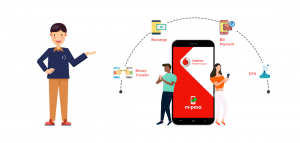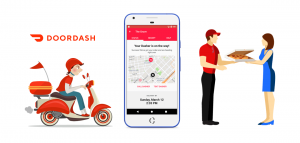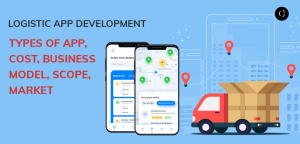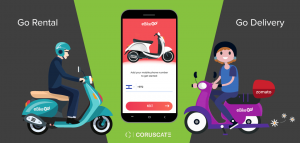Know why the biggest food delivery apps are hitting Latin America’s food delivery market during quarantine and how you can grab the opportunity
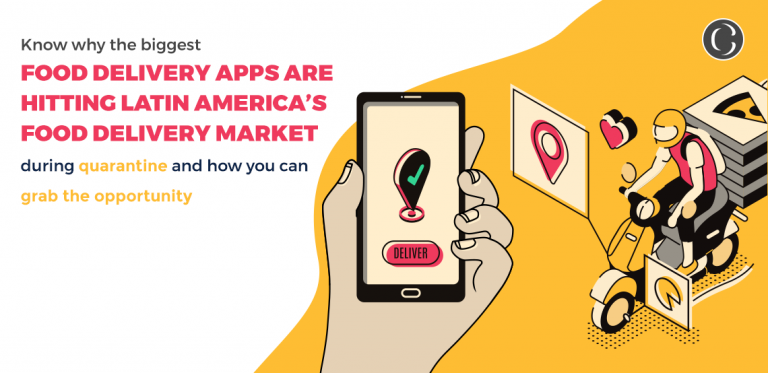
According to Pitchbook, The food delivery app market in the world is expected to grow up to $16.6 billion by 2023. Even this growth is Predicted to achieve through international expansion in general and Latin America in particular. By seeing the latest market activities, this prediction seems to be turning in to reality.
This week, Latin America based leading food delivery company iFood and Hero-owned food delivery company Domicilios.com have declared their merger. The merger still needs regulatory approval, will be expected to take on Bogota based hometown leading company Rappi Inc. Rappi just last year received an investment of $1 billion from Japanese conglomerate SoftBank and became the largest Latin American venture.
Why global companies are more interested in expanding the business to Latin America?
Certainly, a combination of many factors makes Latin America a perfect market. Let’s take a brief overview of all the factors.
- Income disparity:
Though wage disparity in Latin America has improved over a couple of years it is still significant. According to the World Economic Forum, the richest 10% of people of Latin America are holding 71% of the region’s wealth. As a result of this inequality coupled with the latest mobile technology, digital on-demand services have got popularity.
- Metropolitan population:
From 47 megacities in the world, 6 are found in Latin America: Sau Paulo, Mexican city, Rio de Janeiro, Bogota, Buenos Aires, Lima. Since people of metropolitan cities are exposed to urban lifestyle enables delivery companies to focus on a particular area as a startup and then expand gradually from city centers outskirts. These efforts of companies lead them the growth in the region.
- Infrastructure:
Since the region is lacking effective public transport infrastructure encourage people to depend on the private mode of transportation which leads to heavy traffic problems. This is the major factor for rising on-demand delivery apps.
On-demand delivery companies have taken advantage of this traffic congestion and offer speedy delivery by motorcycle, bicycle or walking. This has also reduced the overhead costs of companies. The average delivery charges for a Rappi order is US$1.
- Technical infrastructure and VC investment:
The technology industry of Latin America is thriving as consumers are coming digital through apps and entrepreneurs are grabbing that opportunity and offers the connectivity.
In the first half of 2019 VC investment in Latin American startups was totaled USD 2.6 billion. Technology is capturing every industry in Latin America from banking and education to travel and food delivery.
Sustainability of the Latin American market opportunity:
Despite all the current opportunities visible in on-demand delivery businesses in Latin America, the question of sustainability and profitability still remains unresolved.
There are many food delivery apps already holding a significant market share in Latin America. But Softbank’s billion-dollar investment on Rappi and Uber is also showing an interest in Cornershop are signs that the global delivery giants are interested in the region as well.
The on-demand industry will undoubtedly grow exponentially in Latin America. Powerful global players can surely overtake the market with their experience and local players can use region familiarity and local support to not only be the go-to option for consumers but to run profitable and sustainable regional businesses.
How Covid-19 affected the Latin American food delivery market?
The covid-19 outbreak has infected more than 1000,000 people across the globe. To contain this pandemic suspending public activities, allowing work from home and app-based delivery are the common steps that many countries in the world are taking. Latin American countries are no exception to this.
Figures show that Rappi is having almost 200,000 delivery people in nine Latin American countries and seen a 30% increase in deliveries as of mid-march. Most of them are supermarket orders and pharmacy orders. The company has seen a 28% rise in only pharmacy orders in Colombia after the pandemic.
Brazilian food app iFood delivers ready-to-eat meals said it is too early to measure the impact of the pandemic on its business.
Market challenges in Latin America:
Though Latin America has a wide opportunity for on-demand businesses to grow there are still some challenges that need to keep in mind to establish a profitable business there.
- Cutthroat competition is a big challenge for both local and global players in Latin America. But consumer preferences and digital behavior vary significantly across the region which creates a great opportunity for any startup to be popular in less time.
- There is poor address calibration and local businesses in less developed areas do not even disclose important information such as operating hours or contact details makes it more time-consuming and difficult to operate efficiently. But crowdsourcing can be helpful to overcome this challenge.
- Cash is still a prominent payment option in Latin America, so delivery companies needed to establish cash payments as an option as nearly 30% of current on-demand orders are paid by cash only.
- Ghost kitchens aka dark kitchens are most prevalent over there. These are just commercial cooking spaces that provide all the resources to restaurants that needed to cook up more food and deliver it at low prices. DoorDash has opened a ghost kitchen for many restaurants in California.
- Glovo has launched 7 ghost kitchens across Spain, Argentina, Peru, Italy, and Ukraine. It is also testing dark supermarkets aka SuperGlovos to deliver bread, milk, cereal, and drinks in just 20 minutes.
Overcoming these challenges may help you to compete in the Latin American food delivery market. Existing delivery services have explored unique ways to deal with these obstacles, but continuous innovation is crucial in this region. The secondary spaces can help reduce congestion and may open the doors for the food industry to operate their businesses exclusively through delivery platforms.
How Coruscate can help you to start your own food delivery business in Latin America:

Coruscate always practice on the best technologies and accommodate the best features in the on-demand food delivery app. Our team of developers and designers are highly talented to build the whole IT infrastructure for the food delivery app as per your need.
We offer groundbreaking features such as social media login and profile creation, GPS functionality to get precise location, etc. to make your app stand out in the competition. We also offer integrated artificial intelligence (AI) to make an app more reliable at predicting these things and have your users attracted to great deals and promotions.
Adding these smart features to your on-demand food delivery app can help you in getting more customers and keeping them loyal. We are the experts in the field of developing on-demand apps with the latest technology and amazing user interface.
So if you are looking for the on-demand food delivery app development, feel free to contact us for a free consultation. Our customizable pricing structure will avail you to save a few bucks. Personalized quotes and app demo is also available.



